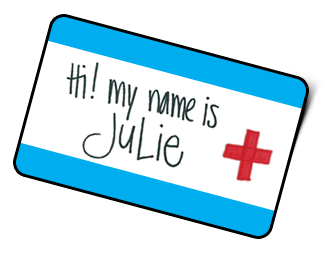A Lifeguard’s Story

Why would I want the Experience API?
Let’s look at a story.
Julie is training to be a lifeguard, which means she has to get certified in CPR. She attends all of the CPR classes, and then takes the “written” test and scores a 98%. The next step is for her to perform CPR on a training dummy. She’s tested for the rhythm and number of chest compressions, as well as her hand placement, the tilt of the dummy’s head, and the proper use of rescue breaths.
It turns out that Julie is pretty good at CPR. She passes everything with flying colors. She obtains her CPR certification.
Julie gets a job as a lifeguard at a sweet (but dangerous) beach. Over the course of the next year, she performs CPR on four people, and is successful in reviving three of them. Julie has an 75% success rate performing CPR in the real world.
How do Julie's experiences translate to xAPI?
| Julie’s Experience | Experience API Statement |
| Julie had perfect attendance for her CPR classes. | Julie attended “Red Cross CPR Class” with an attendance rate of 100%. |
| Julie scored a 98% on her written test. | Julie passed “Red Cross CPR Written Test” with a score of 98%. |
| Julie performed CPR on the CPR training dummy. | Julie completed “Red Cross CPR Training Dummy”. |
| Julie passed CPR training on the CPR dummy. | Julie passed “Red Cross CPR Training Dummy” with a score of 97%. |
| Julie is CPR certified! | Julie completed “Red Cross CPR Certification Course”. |
| Julie successfully performed CPR on a real person. | Julie completed “Real CPR” with a result of “success”. |
| Julie unsuccessfully performed CPR on a real person. | Julie completed “Real CPR” with a result of “failure”. |
| Julie successfully performed CPR on a real person. | Julie completed “Real CPR” with a result of “success”. |
| Julie successfully performed CPR on a real person. | Julie completed “Real CPR” with a result of “success”. |
This example is a bit simplistic
The Experience API allows you to store and track every learning experience that happens. It also lets you track and store that same level of data about real-world experiences and activities. When Julie was attending her classes, there could have been individual xAPI data points about every class that occurred, and her attendance for each one. When she took her written test, there could be data points for every question and how she answered each one. The CPR Dummy could record the rhythm and numbers of chest compressions and the tilt angle of the head during rescue breaths.
Some points to consider:
- Was her score affected by her attendance? How did her score compare to other students, based on their attendance?
- How did her score on the CPR dummy compare to her written test? How did others fare in this same regard, and how did it compare to class attendance?
- Were there other programs that resulted in overall higher success rates in the real world?
- Will her recorded success rate help her score her next job?
There are so many questions that can be asked, and most of them can be answered with the data that the Experience API allows to tracked and stored.
Why would you want to track and store everything about learning experiences?
Because by having this information, you get invaluable insight. You can visualize all of the activities people are doing, both learning specific and actual performance. With that information you can continually improve learning experiences, guided by how they are helping a person’s real world accomplishments.
Older e-learning specifications were limited to a single person playing a course on a computer, in a Learning Management System, within a web browser. The types of data that you could collect were restricted (a person began a course, a person completed a course, a person scored 93% on an assessment).
With the Experience API, it doesn’t matter where the learning happens or what the learning activity is. If a learner has read a book, used a mobile app, learned from another person in a social network, trained in a simulation, experienced team-based learning, or WHATEVER. You name it, and you can track it and get insights from the data.
So why would you want to track real-world experiences, not just learning activities?
Simply put, you can track real-world performance after someone has completed a designed learning experience. It’s the holy grail of what we’re looking for in learning data analytics, tying in learning and actual performance data to assess whether the learning was effective or not.
It’s easy to see the broad implications the Experience API has for the classroom and the workplace — that the value of all of this data from many different sources being delivered to one place and analyzed in one place is incredibly important.